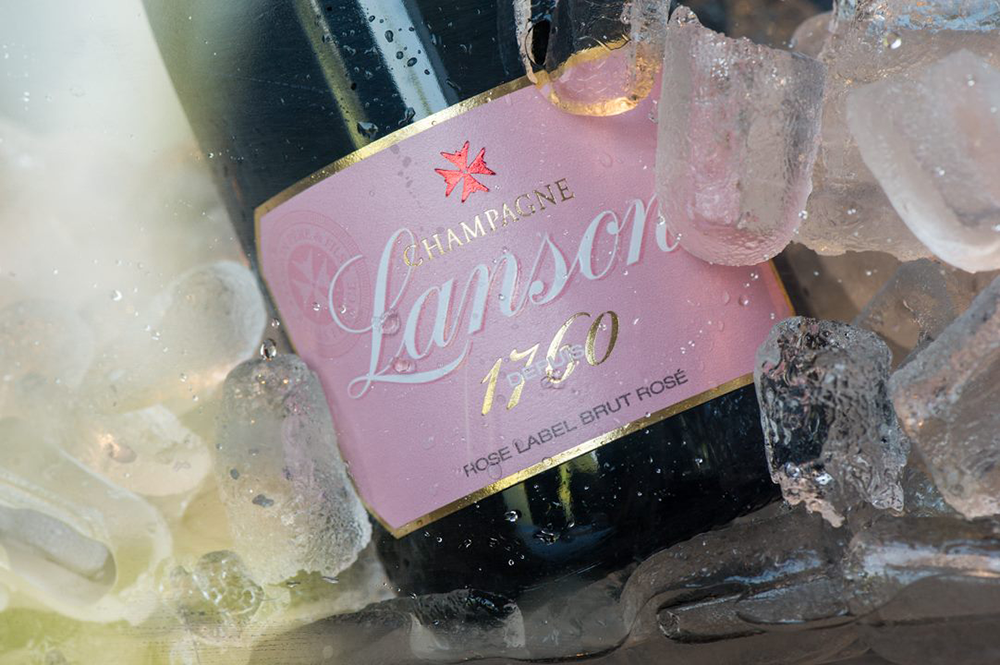
Enguerrand Baijot – Champagne Lanson Part 1
Oct 09, 2019
Enguerrand was born in Reims, Champagne and grew up in the Champagne region for 18 years before moving away for education. This is where his passion for Champagne comes from and, as he says, “is a family story.”
Before joining the family business, Enguerrand spent five years in Paris as the head of marketing for a professional sports team. But he couldn’t keep away for too long–Enguerrand made the leap in 2005 and started as a salesperson in Paris. “[It] was very important for my father always that if I wanted to join the business, I had to start from the bottom, prove myself, and make my way up,” he says.
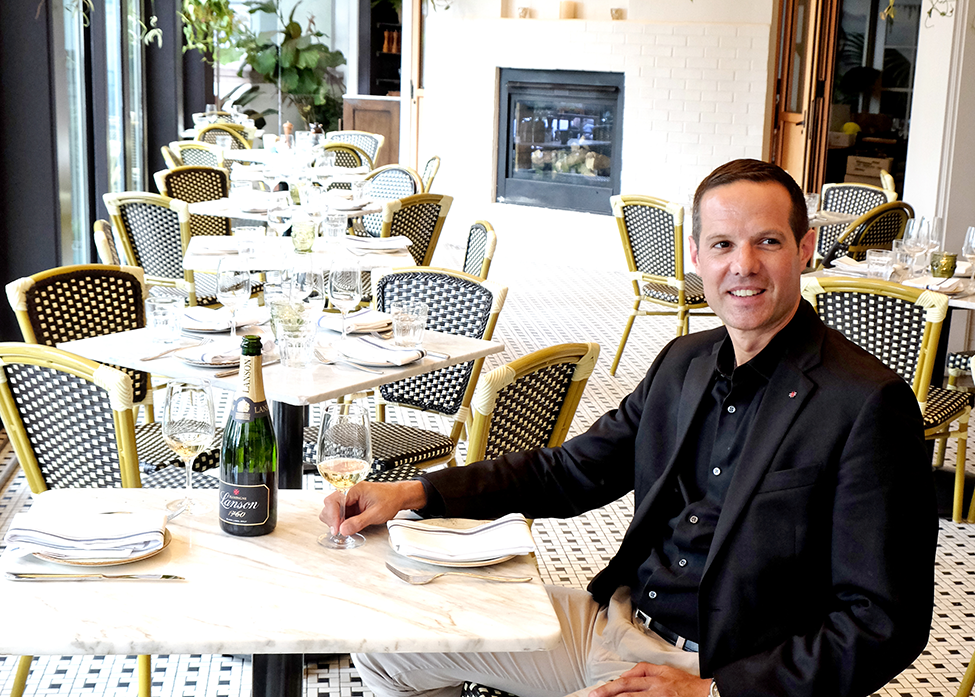
INTERVIEW WITH ENGUERRAND BAIJOT
First of all, what’s the correct way to open a bottle of Champagne?
The first thing you have to do is remove the foil. In our case–with Lanson–you do not need a wine key, there is an easy opener. Softly, gently you remove the foil around the bottle. Every Champagne bottle is within what we call a cage. That cage is a protection. To remove the cage basically that is with six turns. One, two, three, up to six. Once you open the cage, what’s very important, you do not remove it. You just enlarge the cage from the cork. Make sure you point the bottle to a safe spot (not into the direction of anyone), softly you enlarge the cage, and with your right hand while maintaining the cork, you softly, gently turn the bottle and naturally the cork is going to come which will make a soft pop… Which is a sign that the party is starting!
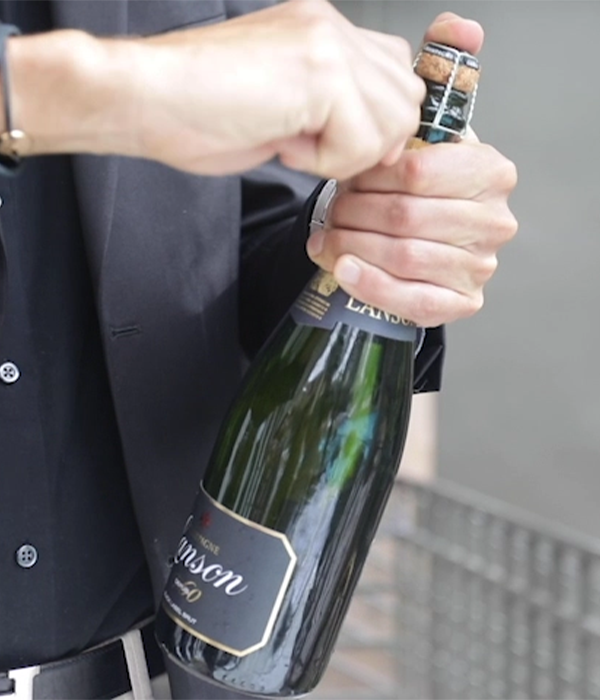
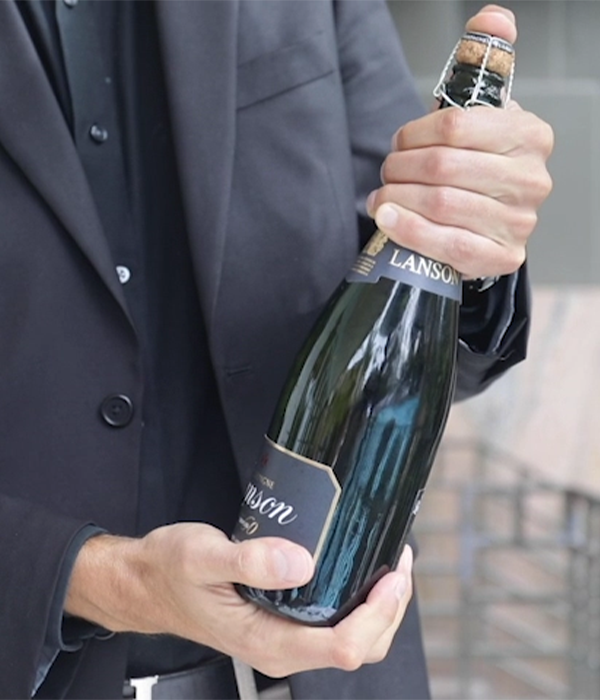
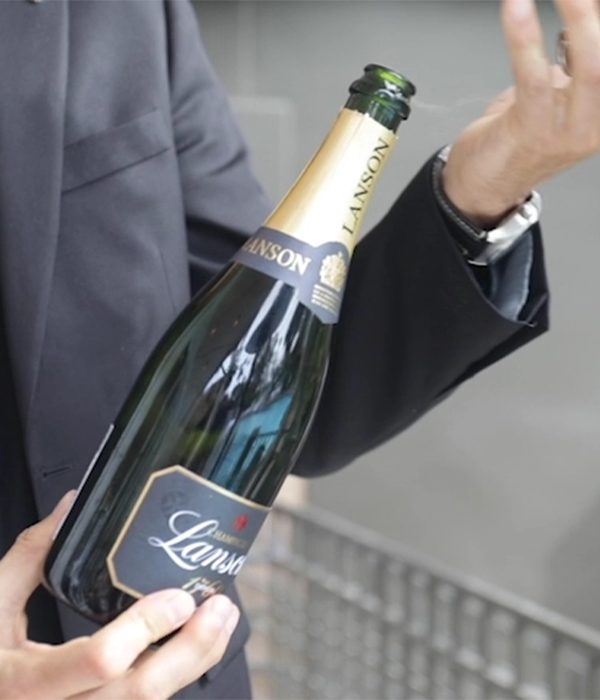
Tell us more about Champagne as a region and a product?
Champagne is a region, it’s a region in France which is roughly 150 kilometers east of Paris, a hundred miles if I have to translate. The product Champagne can only come from the Champagne region. That’s really, really important to keep in mind. Anything else is sparkling, for example, Prosecco comes from Italy, Cava comes from Spain, you have domestically some California sparkling. But Champagne, as a wine, as a product, can only come from the Champagne region.
With that in mind, we have roughly 34,000 hectares of vineyards in the Champagne region split within four main territories where we plant three different kinds of grapes. The first one is Pinot Noir which you will find in Montagne, located around the city of Reims, where I’m from. The second one is the Pinot Meunier which you will find mostly in Vallée de la Marne, around the city of Épernay which is the second-largest city of Champagne after Reims. The third grape is Chardonnay which you find in Côte des Blancs. Champagne as a product is a blend of these three varietals.
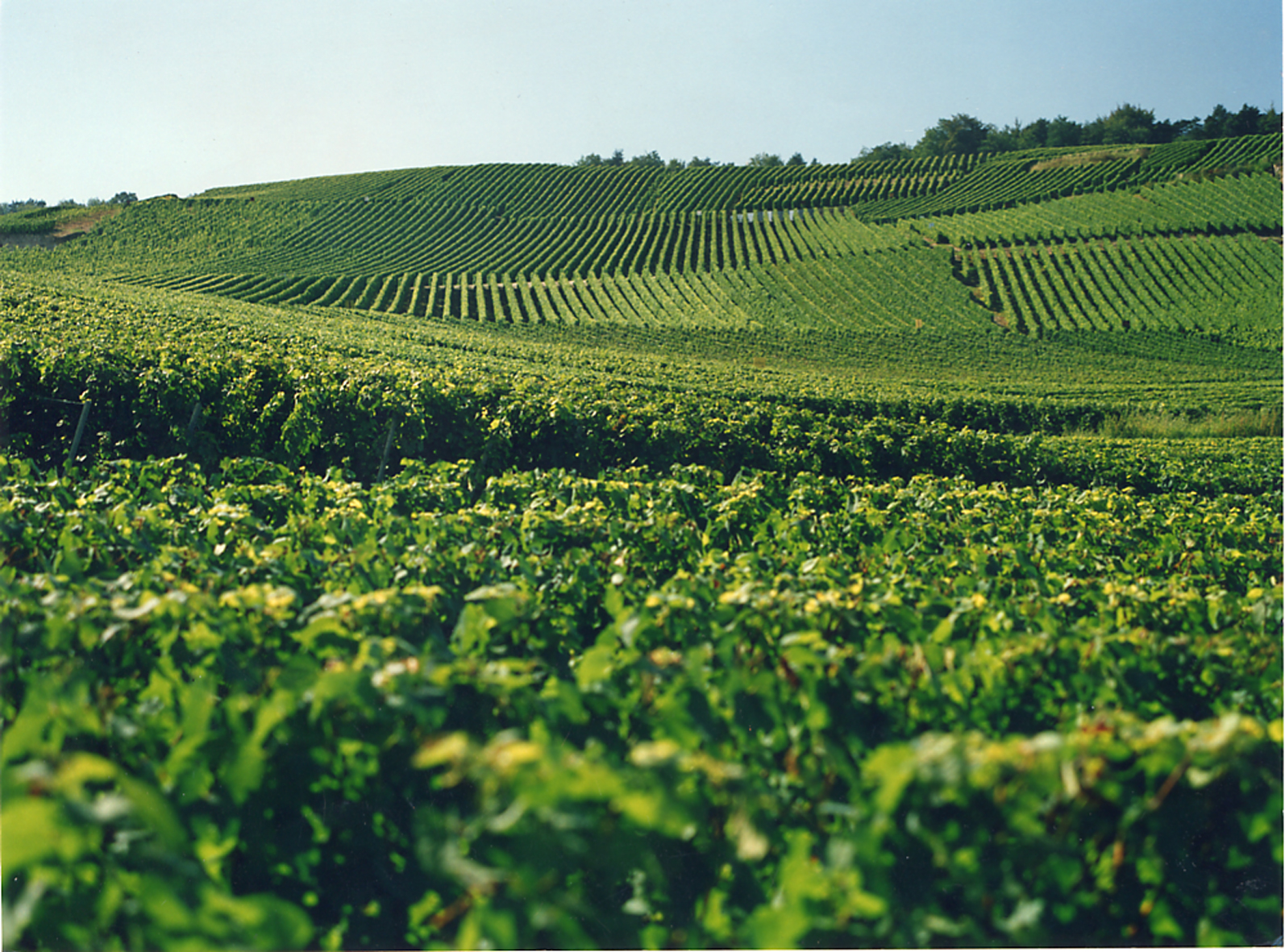
How do Champagne Lanson’s history and style contribute to the brand’s uniqueness?
Historically, Lanson was founded in 1760. It’s a 259-year-old winery. Lanson has always been family owned since, which is something we are really proud of. That makes us the oldest Champagne house to remain family-owned. It is the fourth oldest one, but the oldest one to remain family-owned. Lots of heritage.
Lanson within the Champagne category has a truly unique style. We are extremely proud to be different from most of the other Champagne houses. By any way we are claiming to be better, it is up to the consumer to make this final opinion. But very proudly we know we are different from most of the other Champagne houses.
First, Champagne is a blend as we said earlier of three varietals. Lanson has always been using predominantly Pinot Noir. Historically, Lanson has always been making wine the same way–by blocking the malolactic fermentation.
At Lanson, we don’t want that natural process to occur. We want to preserve the malic acid which is naturally contained in the grape. In order to block the malolactic fermentation, basically we chill the wine. That’s what makes Lanson so distinctive–we are predominantly Pinot Noir, and we systematically block the malolactic fermentation to preserve the natural purity of the fruit. As a result, our wines are going to taste different–they are going to be fresher, cleaner, crisper than most of the others.
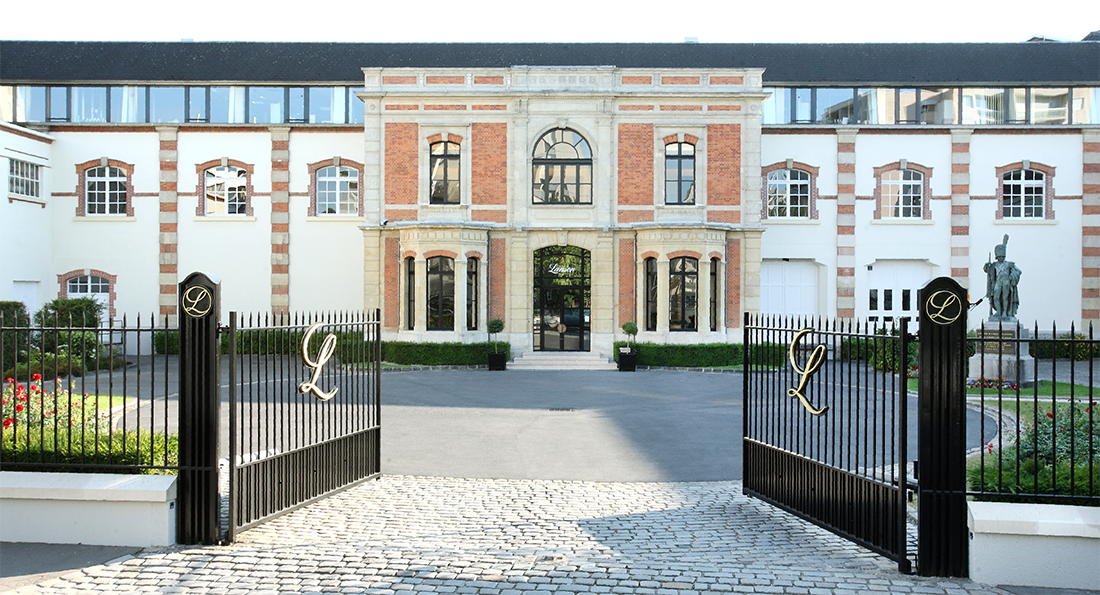
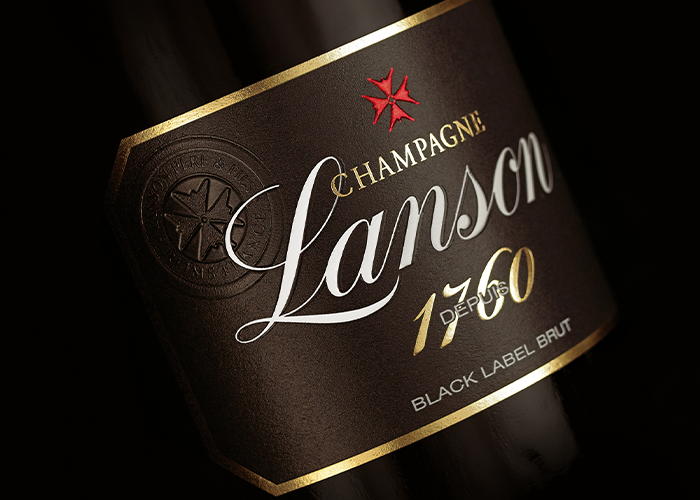
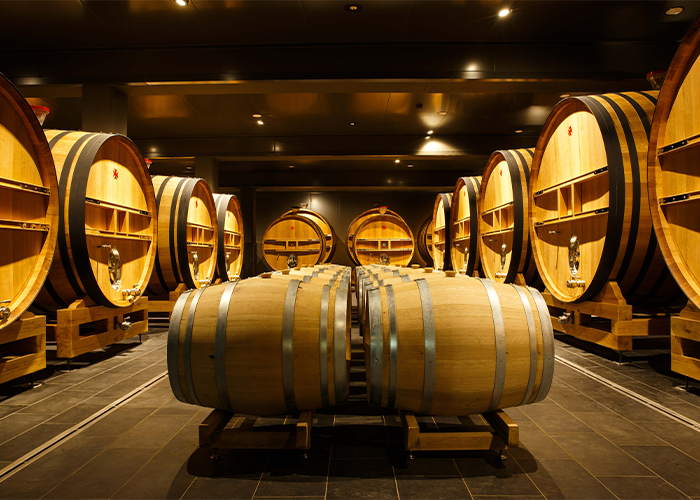
Tell us about Black Label.
Black Label is our brut non-vintage. It is the wine that defines most of our style. It is the backbone of the company, the DNA of the brand. If I have to present the Lanson style without talking, I would strongly recommend starting with a glass of the Black Label. Everything is constructed around that wine.
I would go even further saying that to me, you truly judge the style and quality of a Champagne house by its non-vintage. If you’re capable of making a great non-vintage, then I strongly recommend you to try the rest afterward. Especially if you’re not familiar with a Champagne house, I strongly recommend you to try first their non-vintage.
When you produce a bottle of non-vintage Black Label, you want every bottle to taste the same. To ensure that consistency, playing with the reserve wine is extremely important. On average, you have a minimum 50% grand cru premier cru, which gets into the blend, as well as 30% reserve wine. To produce Black Label on average, we’re going to use up to 10 different years and 100 different cru’s.
Black Label is going to spend four years in our cellar on the lees, which is basically three times more than the minimum requirement, which is 15 months in Champagne for a non-vintage. Our style, our process requires to age longer so, basically, having the Lanson style is an investment in time and quality.
What role does disgorgement play for Champagne?
It’s a big shock for the wine. It’s like you or us going to surgery. If you go to surgery, you need to rest. For the wine, it’s the exact same. Imagine, it’s been resting, sleeping for four years, and suddenly it’s being shaken from one side to another. To make sure the wine gives its full potential once being released it needs to rest. At Lanson, after the disgorgement, we make sure all our non-vintage spend an additional six months in a cellar before being released. For the vintage, it goes one year (minimum) back to the cellar before being released. To make sure it’s perfect once it gets to market.
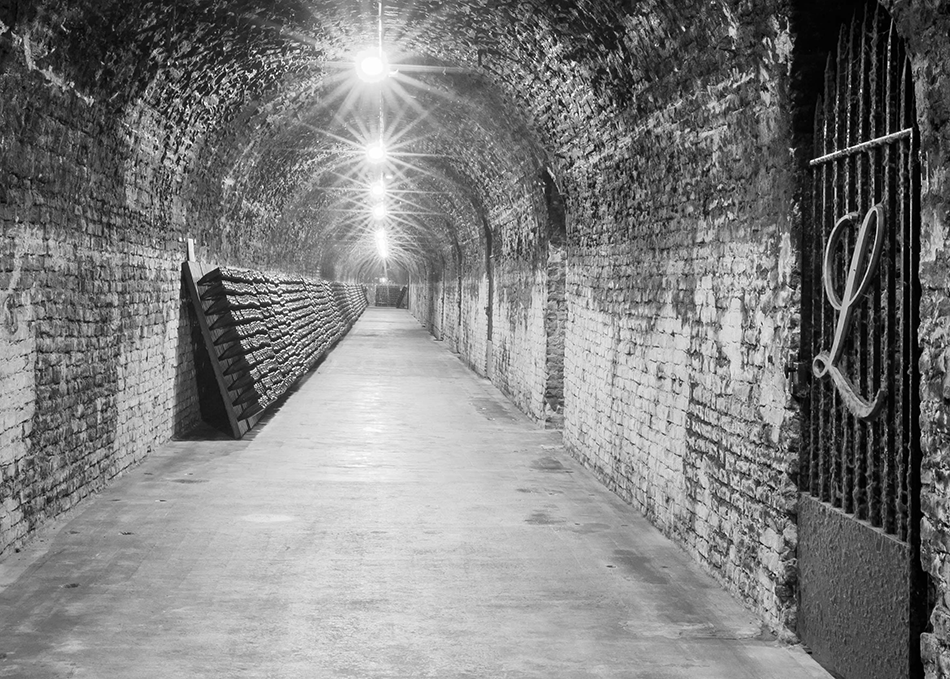
Tell us about Rosé Label.
Making sure it tastes good. Love it. Can’t get bored of it!
Rosé is the fastest-growing category in Champagne. It’s insane how much people on average are drinking Rosé. For instance, the US which is the second-biggest export market for Champagne, is now, since two years, [the] number one export market in volume and value for Rosé Champagne. 25% of the Champagne consumed in the country is Rosé.
So, how do you make Rosé? How do you make that exquisite beverage? There are two ways to make Rosé. Lanson has been one of the very first Champagne houses to elaborate on the Rosé Champagne. It was the early ‘50s and at that time, there were very few Champagne houses making Rosé. We were pretty much all doing maceration which is skin contact. Generally the maceration method gives a very dark kind of red color. In terms of taste profile, you have lots of tannin on the palate.
At Lanson, we never wanted that. Because first and foremost, we want our wine to be crisp, fresh and clean, delicate somehow. For that, we choose the opposite way. Only in Champagne [do] you have another way to make Rosé. It’s what we call Rosé d’Assemblage
At the very end of the first alcoholic fermentation, we have a bit of still red wine coming from Champagne. Obviously, everything has to come from the Champagne region! We add 6-6.55% of still red wine from a beautiful village named Bouzy which is planted with Pinot Noir in Montagne de Reims grand cru village. Just by the color, you can tell it’s a Rosé d’Assemblage. That’s how you get that really pale, salmon color. When you get that pale, salmon color, instead of having tannin taste profile your Rosé is going to be very delicate, subtle, and feminine with some very gentle red fruit notes.
So before being a Rosé, it’s a Lanson Champagne like it’s twin brother, Black Label–crisp fresh clean, slightly more subtle, delicate and feminine with that addition of still red wine.
